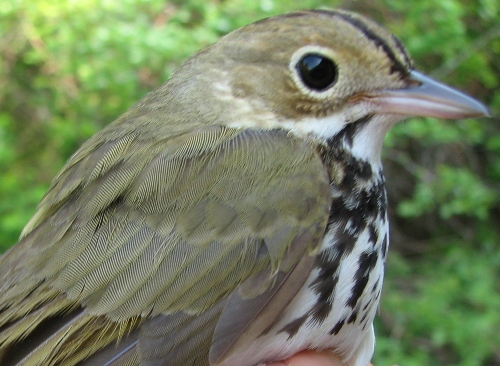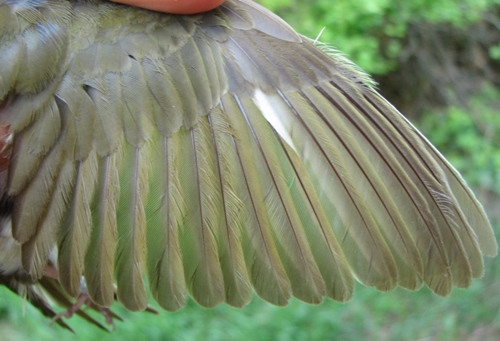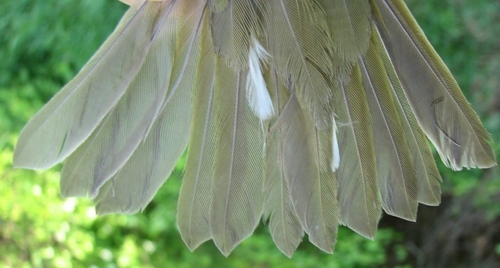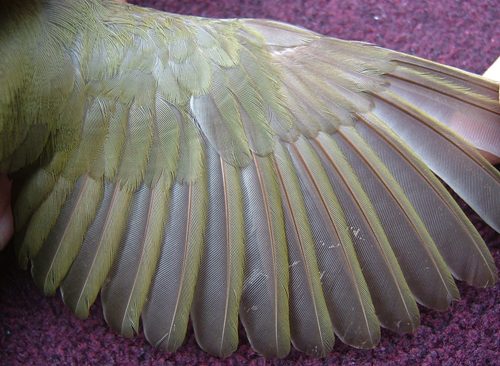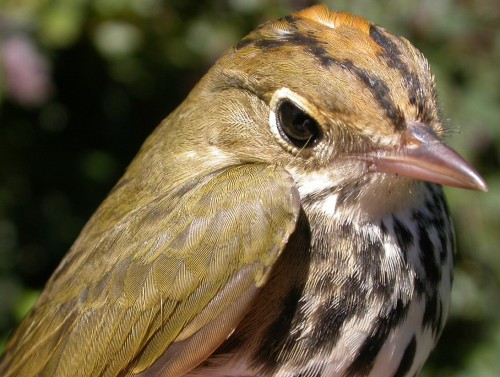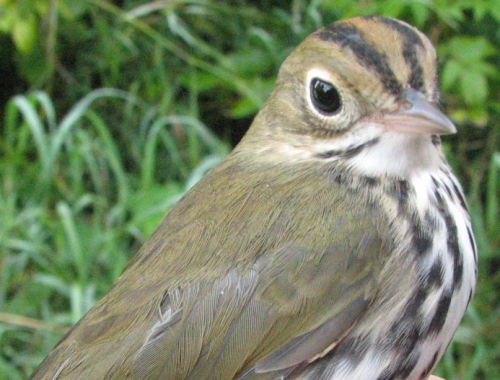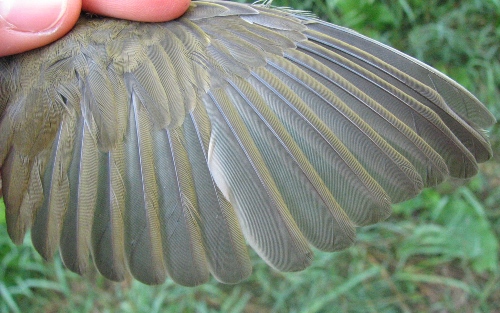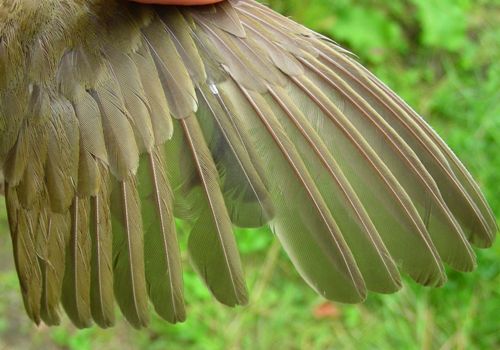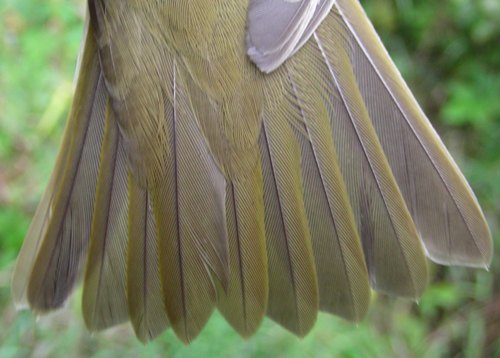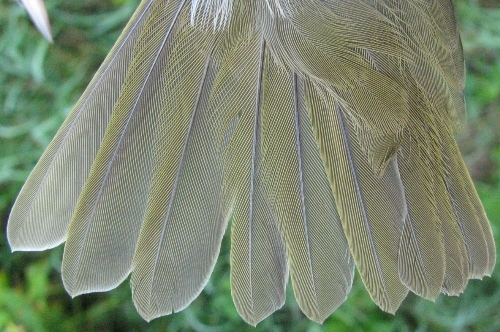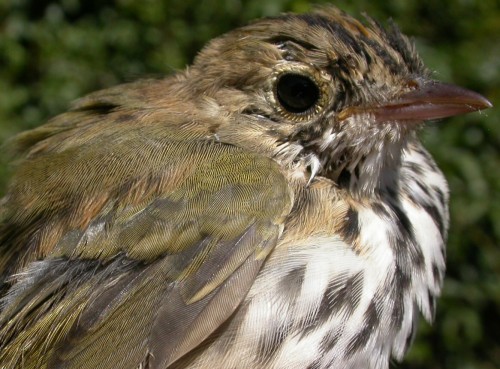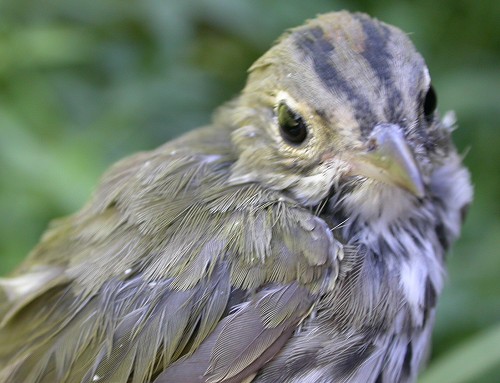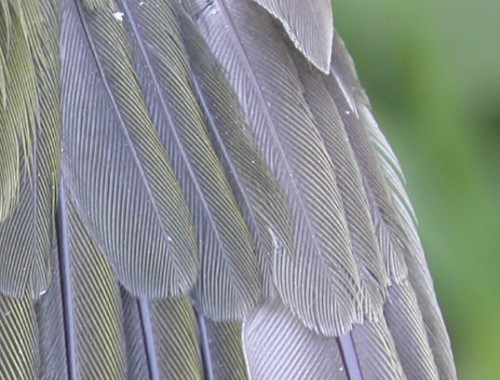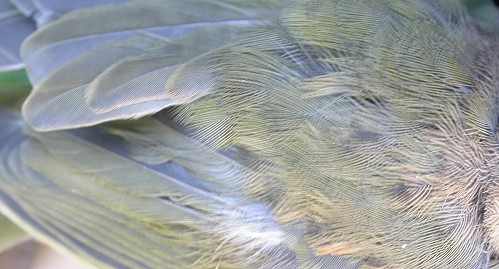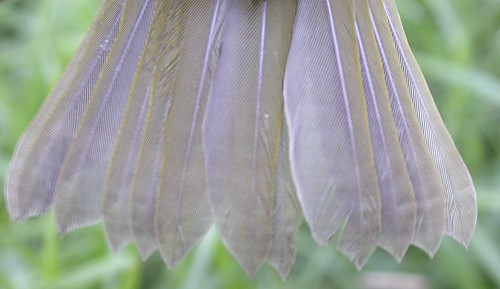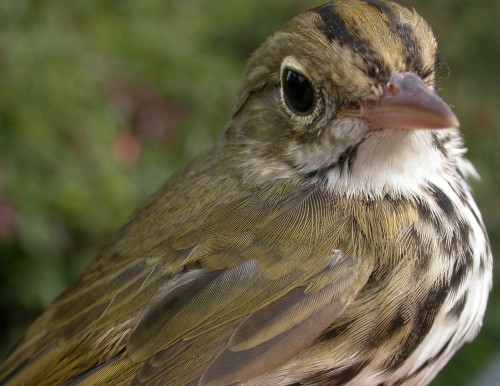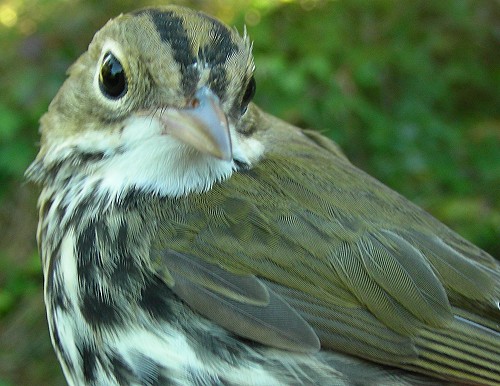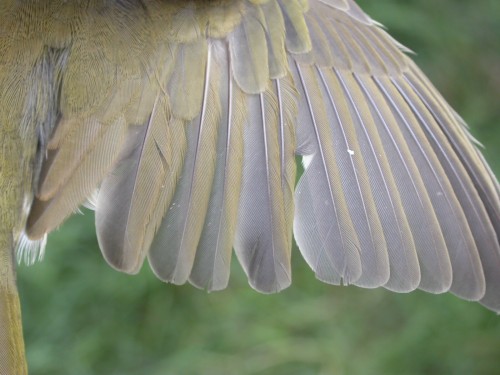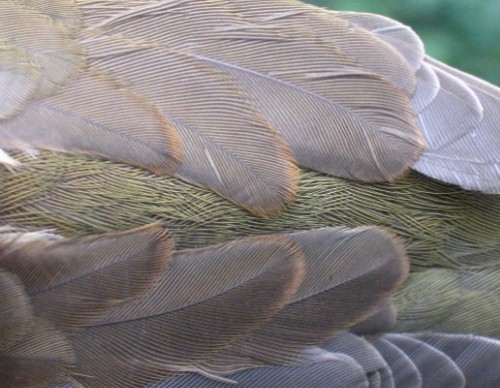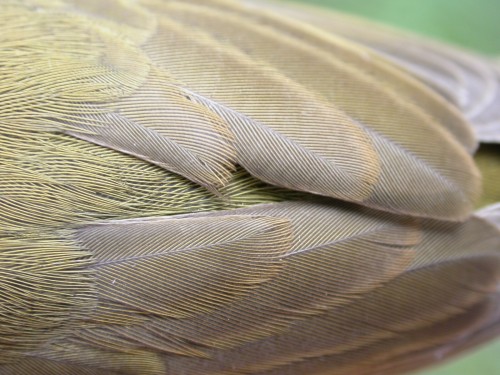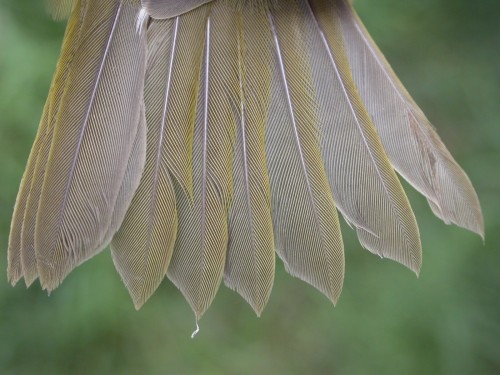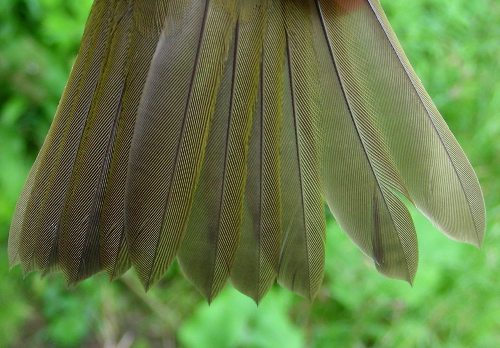|
McGILL BIRD OBSERVATORY |
||||||||||||
NOTE: This species account has been moved to Piranga to allow for improved comparison among examples.
Ageing and sexing details: Overall plumage usually provides few clues about age for Ovenbirds in spring; sex can be determined only in the hand if a brood patch (females) or cloacal protuberance (males) is evident.
After-second-year Ovenbirds have a relatively uniform wing, lacking obvious contrasts in wear among the tertials, greater coverts, and primary coverts.
After-second-year Ovenbirds have fairly broad rectrices.
Second-year Ovenbirds may show visible moult limits between the primary coverts and greater coverts as in the photo below, or between the tertials and adjacent secondaries or greater coverts.
Generally the open wing and/or tail need to be examined to be confident about the age of Ovenbirds, but individuals with a substantial amount of orange in the crown are most likely after-hatch-year.
After-hatch-year Ovenbirds have a uniform wing, lacking any pale or rusty tips to the tertials or any other feathers. Note that, as in the second photo below, adults may be observed replacing primaries or secondaries; this can be taken as an indicator the individual is after-hatch-year, since hatch-year birds do not replace these feathers during their preformative moult.
After-hatch-year Ovenbirds have relatively broad and rounded rectrices, occasionally with a faint trace of white near the tip of the outer feathers (r5 and r6).
Some after-hatch-year birds may remain recognizable as second-year up to the completion of their prebasic moult, as long as distinctively juvenile feathers are retained.
Second-year birds are most easily recognized by the retention of distinctively juvenile feathers on the wing. Typically these are pale- or rust-tipped tertials as in the second photo below, but they may also include faded primary coverts with characteristically juvenile broad barb spacing, as in the first photo.
Second-year Ovenbirds in summer may retain narrow and pointed juvenile rectrices (as shown in the photo below), or may have already partially or completely replaced them with adult rectrices.
Hatch-year Ovenbirds may occasionally be recognized when perched by distinctively pale- or rust-tipped tertials, but the open wing and/or tail should be checked when possible. Hatch-year Ovenbirds generally have minimal orange in the crown, but this appears to not be sufficiently reliable to use for ageing.
Hatch-year Ovenbirds usually have distinct rusty (or occasionally pale) tips to the tertials.
Hatch-year Ovenbirds typically have narrow and distinctly pointed rectrices.
|











